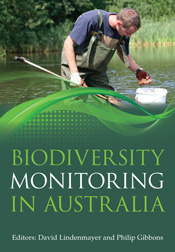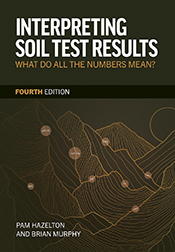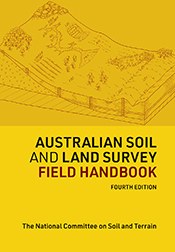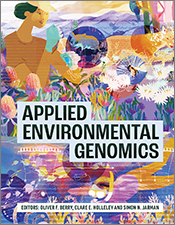Biodiversity Monitoring in Australia
Edited by: David Lindenmayer, Philip Gibbons
Critical insights into the successes and failures of biodiversity monitoring, and potential solutions.
Ecological and biodiversity-based monitoring has been marked by an appalling lack of effectiveness and lack of success in Australia for more than 40 years, despite the billions of dollars that are invested in biodiversity conservation annually. What can be done to rectify this situation? + Full description
This book tackles many aspects of the problem of biodiversity monitoring. It arose from a major workshop held at The Australian National University in February 2011, attended by leaders in the science, policy-making and management arenas of biodiversity conservation. The diversity of participants was deliberate – successful biodiversity monitoring is dependent on partnerships among people with different kinds of expertise.
Chapter contributors examine what has led to successful monitoring, the key problems with biodiversity monitoring and practical solutions to those problems. By capturing critical insights into successes, failures and solutions, the authors provide high-level guidance for important initiatives such as the National Biodiversity Strategy, similar kinds of conservation initiatives in state government agencies, as well as non-government organisations that aim to improve conservation outcomes in Australia. Ultimately, the authors hope to considerably improve the quality and effectiveness of biodiversity monitoring in Australia, and to arrest the decline of biodiversity.
- Short descriptionNews
No longer available in a print edition.
Reviews
"There is a wealth of fabulous material in this book and anyone interested in monitoring should read it. A bonzer (excellent) effort."
R.H. Marrs, Biological Conservation, Vol 158 (6), 2013
"This is a very useful text on biological diversity monitoring that is simply written in an understandable way yet has some complex and insightful views on why and how monitoring should be carried out. Thus, it is an appropriate volume which will assist managers in conserving biodiversity"
Hugh Kirkman, Australasian Journal of Environmental Management, 2013
Details
ePDF | April 2012ISBN: 9780643103580
Publisher: CSIRO Publishing
Available from eRetailers
ePUB | April 2012
ISBN: 9780643103597
Publisher: CSIRO Publishing
Available from eRetailers
Features
- Engaging style
- Practical information that is based on very high quality scientific information
Contents
Introduction: making monitoring happen – and then delivering on Australia’s Biodiversity Conservation StrategyNational and international perspectives
1 Making monitoring up-front and centre in Australian biodiversity conservation
2 Accountability: we’re an indulgent and marginal profession if we can’t measure the effectiveness of investment in environmental management
3 Ecoinformatics solutions to support monitoring for improved biodiversity conservation
4 Monitoring Australian birds to meet international obligations
5 Cheerfulness and grumpiness in ecological monitoring in Australia
6 The conservation return on investment from ecological monitoring
7 Big-picture assessment of biodiversity change: scaling up monitoring without selling out on scientific rigour
8 An endpoint hierarchy and process control charts for ecological monitoring
9 Lessons from environment accounting for improving biodiversity monitoring
Government agency and NGO perspectives
10 Cows, cockies and atlases: use and abuse of biodiversity monitoring in environmental decision-making
11 A park manager’s perspective on ecological monitoring
12 Monitoring for improved biodiversity outcomes in the private conservation estate: perspective from Bush Heritage Australia
13 Practical challenges in monitoring and adapting restoration strategies and actions
14 Measuring and reporting on conservation management outcomes
15 Making monitoring work for conservation: lessons from The Nature Conservancy
16 Biodiversity monitoring from a community organisation perspective
Programs and the lessons learned from them
17 Biodiversity monitoring in Canada’s Yukon: The Community Ecological Monitoring Program
18 Monitoring for improved biodiversity conservation in arid Australia
19 Exploiting the back-loop of the adaptive cycle: lessons from the Black Saturday Fires
20 Waterbird monitoring in Australia: value, challenges and lessons learnt after more than 25 years
21 Biodiversity monitoring in the Australian rangelands
Discussion
22 Can we make biodiversity monitoring happen in Australia? Moving beyond ‘It’s the thought that counts’
Authors
David Lindenmayer is a Research Professor at The Australian National University. He has led a research team of many outstanding students and other researchers for much of that time. He has published 31 other books as well as over 585 scientific publications. A number of these publications have addressed issues associated with ecological and biodiversity monitoring. David has worked on Australian biodiversity for more than 25 years.Philip Gibbons has worked in several land management agencies and research organisations over a career spanning 20 years. He is currently a researcher at The Australian National University and a regular consultant to governments. His research focus is native vegetation management and several of his projects rely on sound approaches to monitoring.








